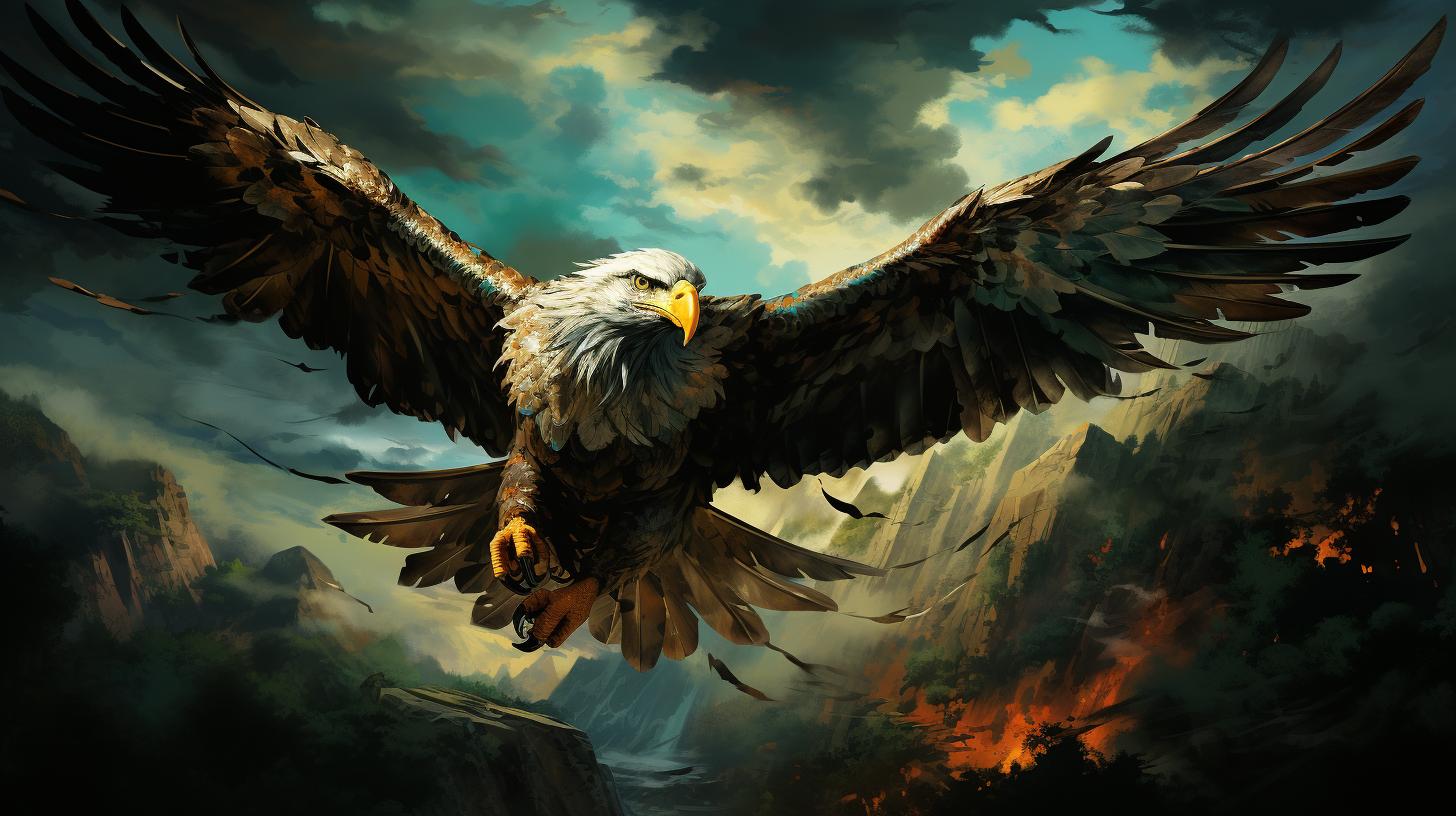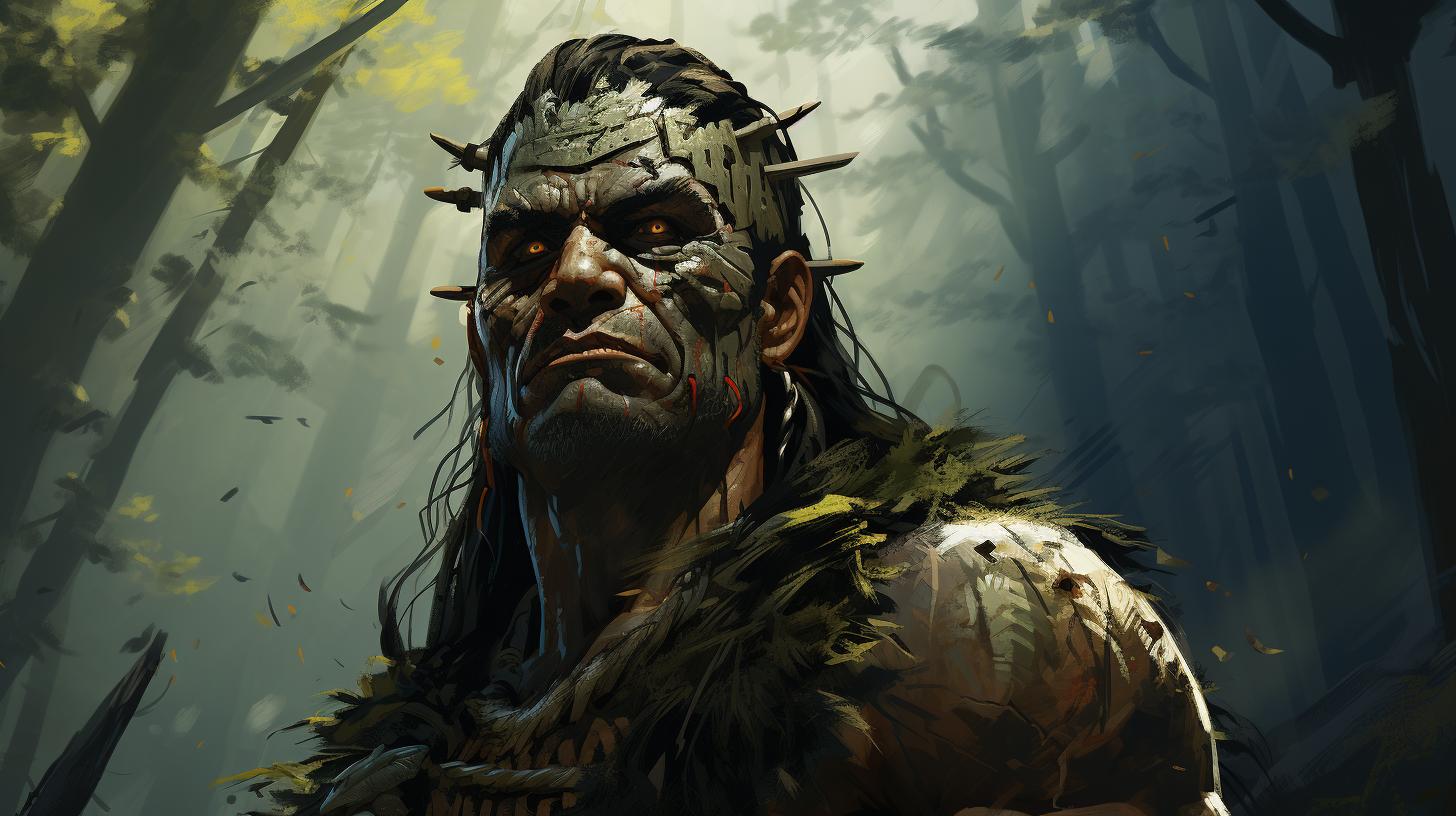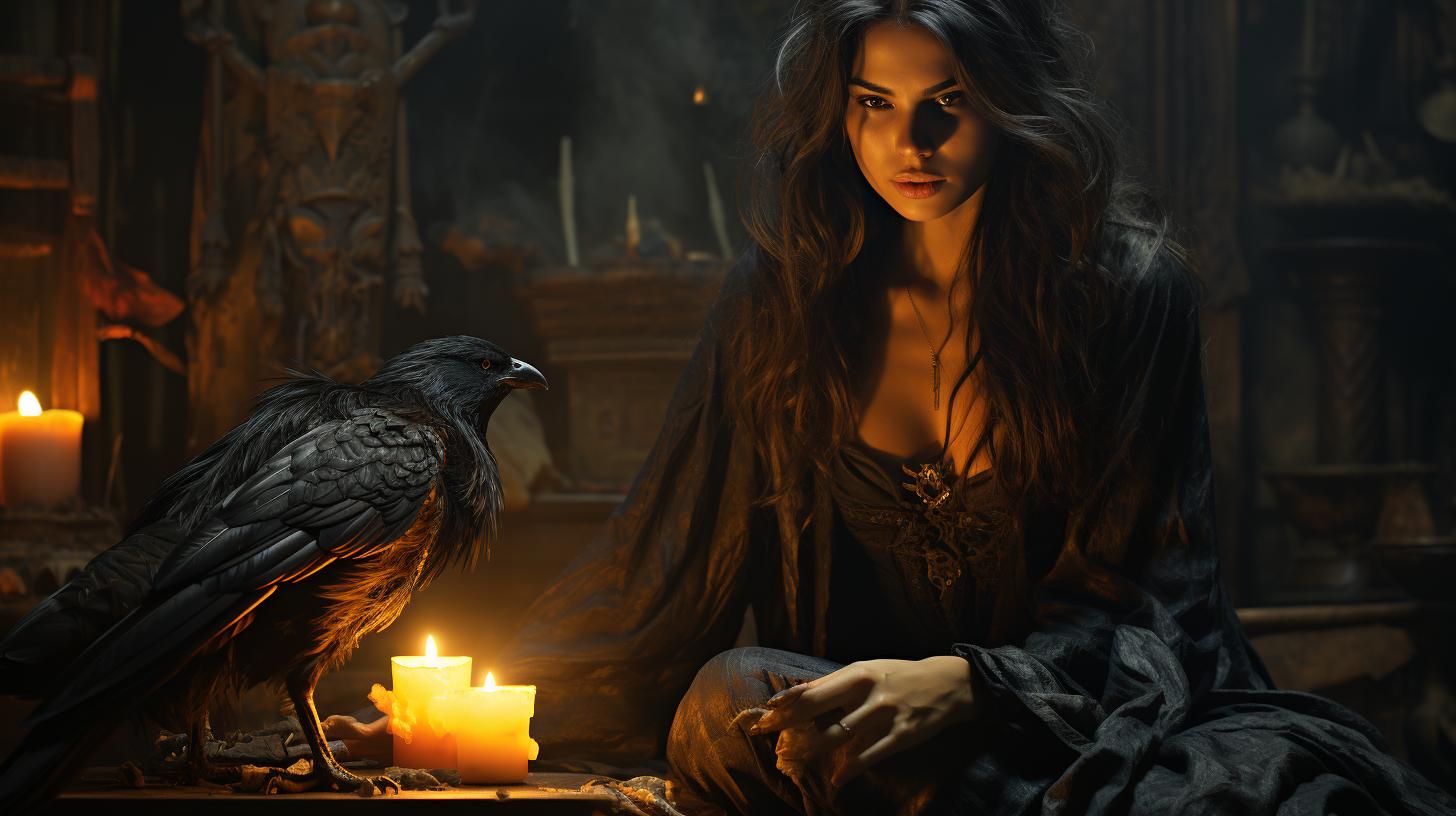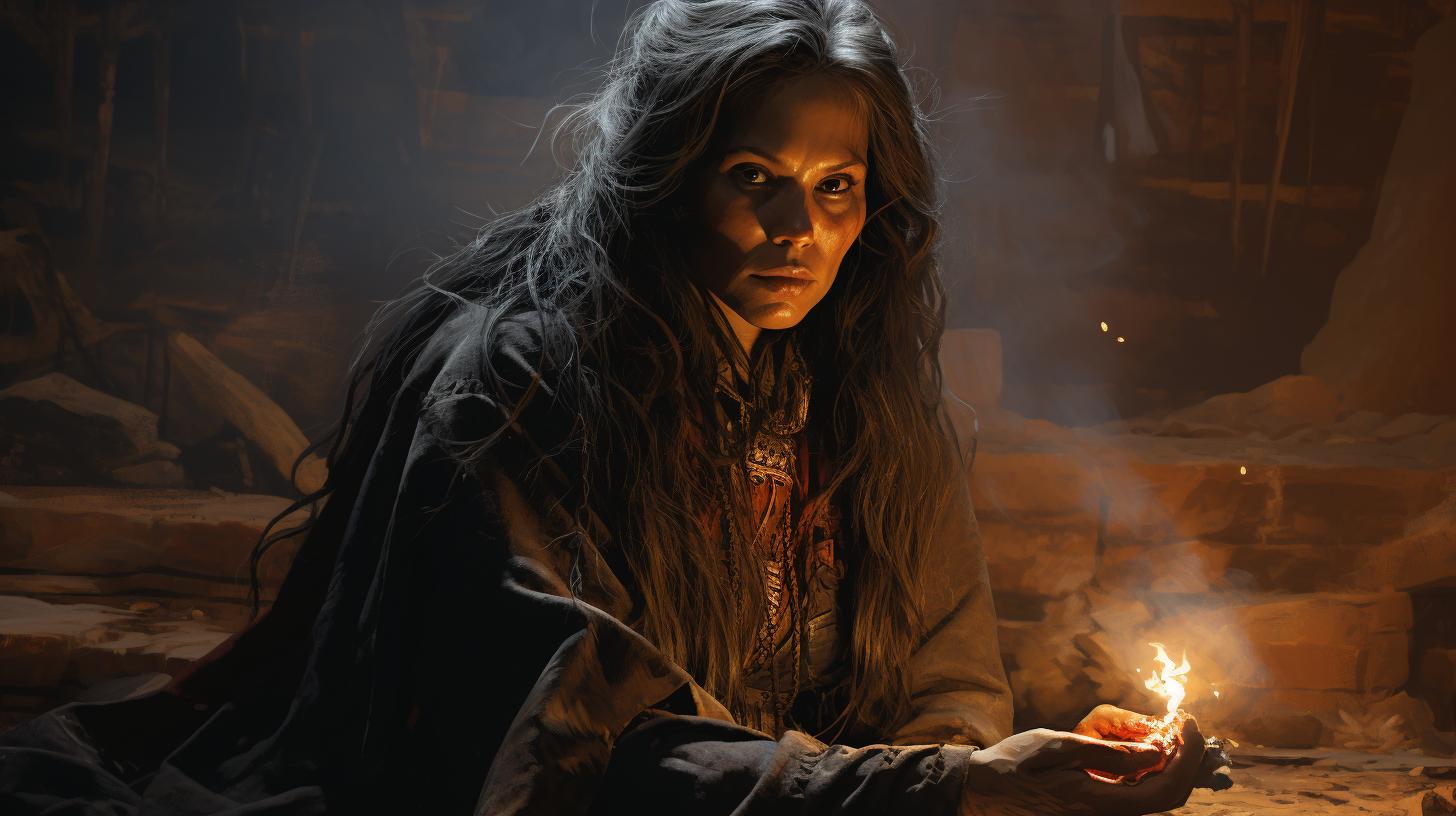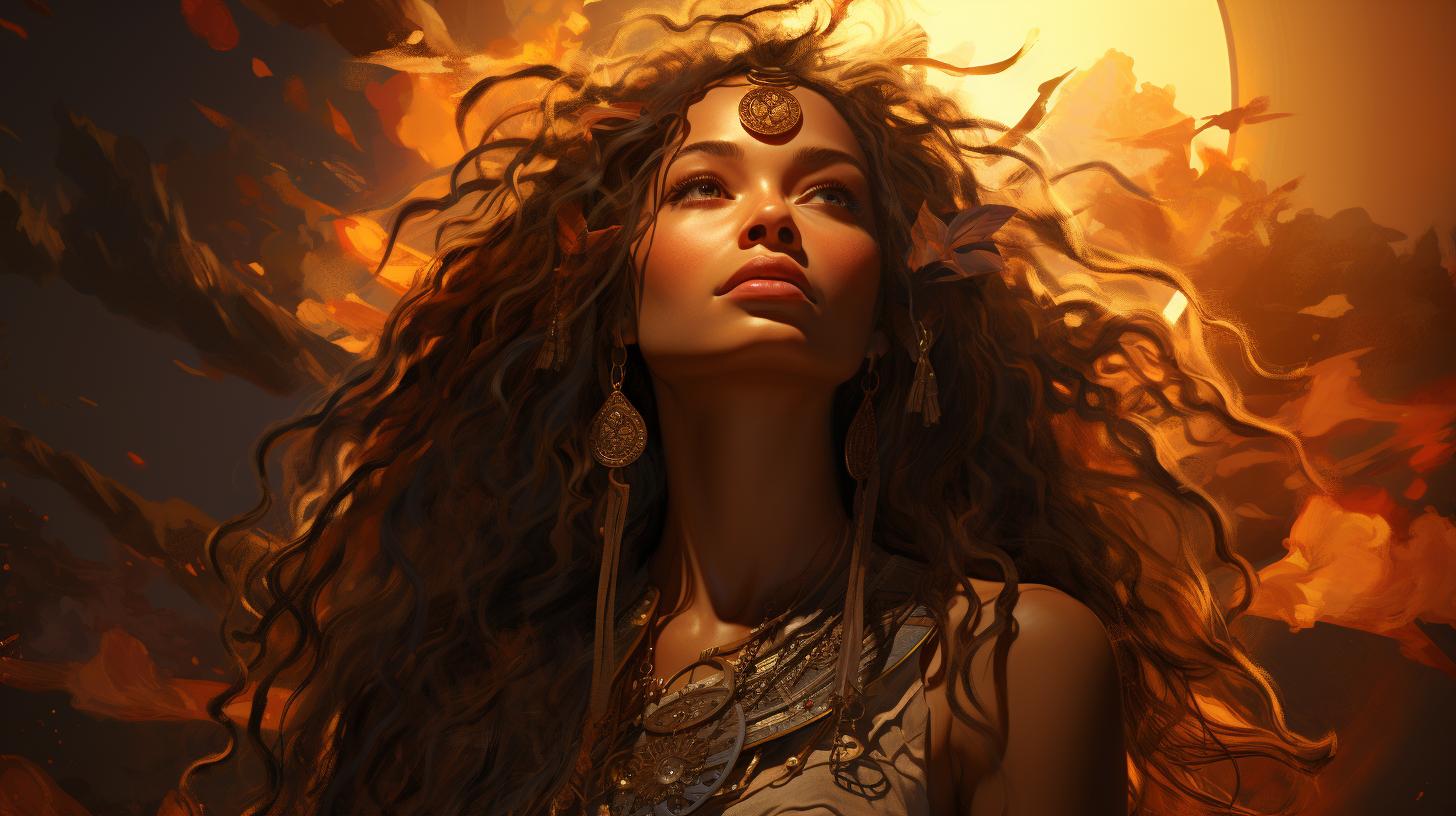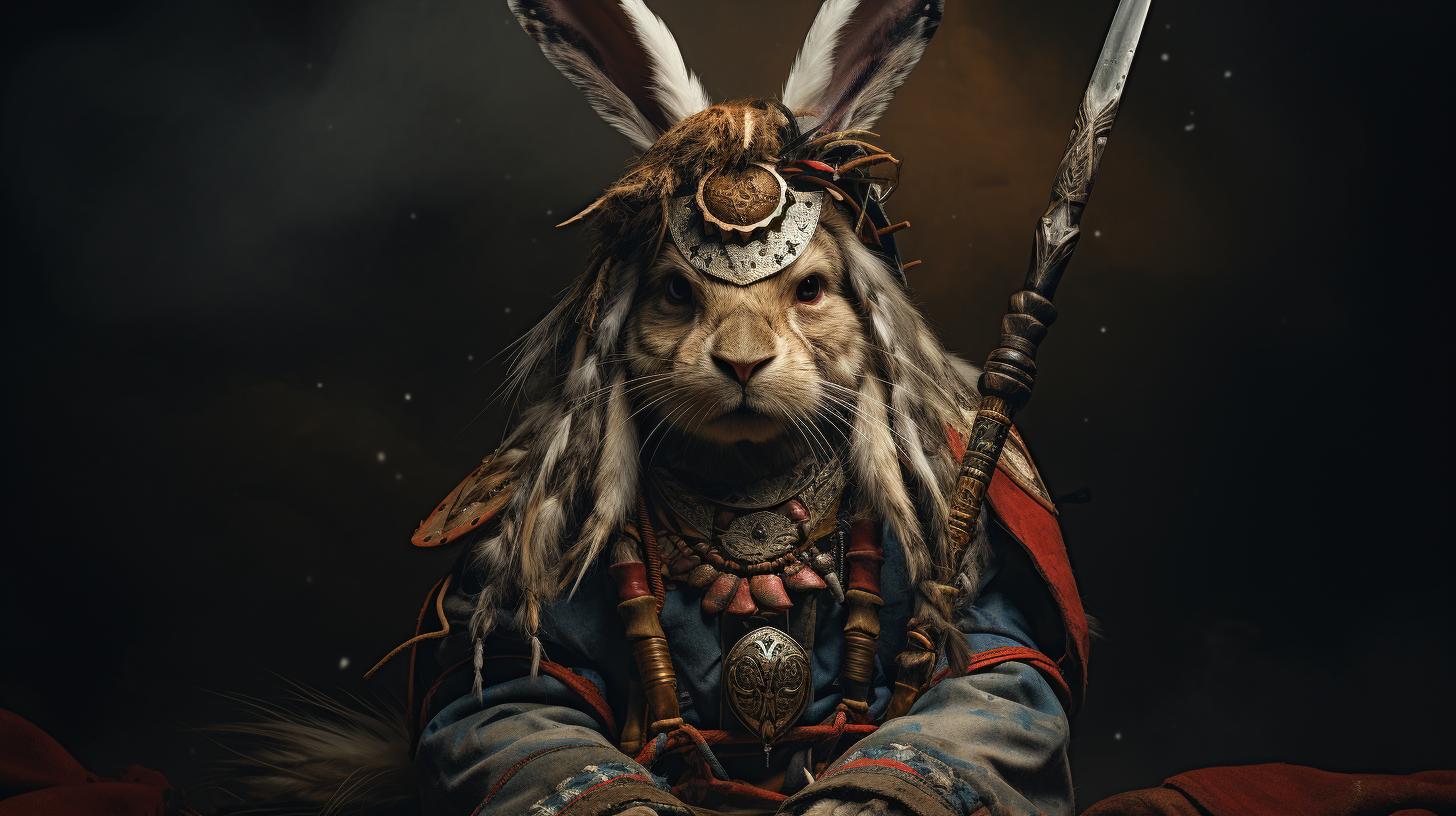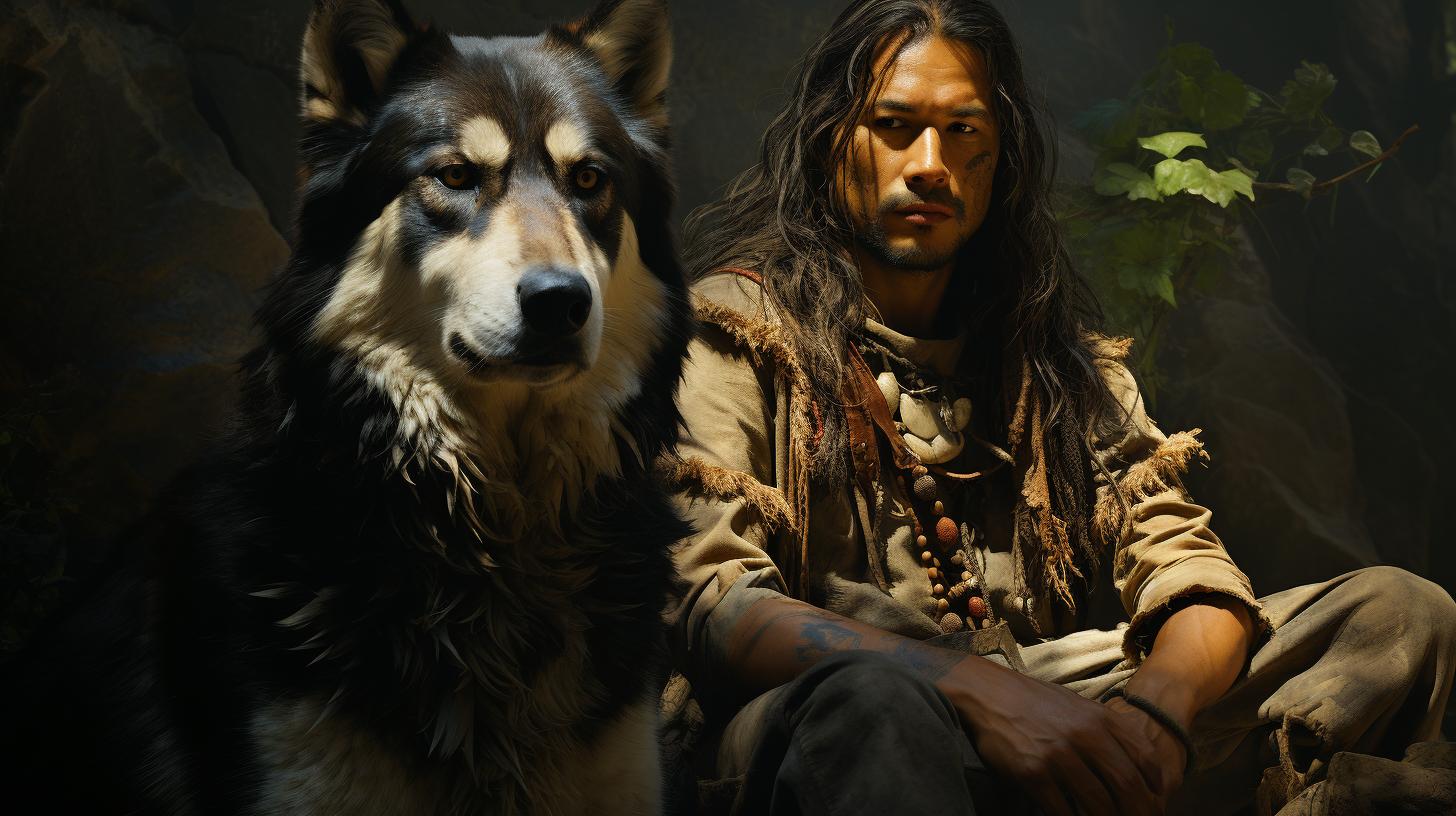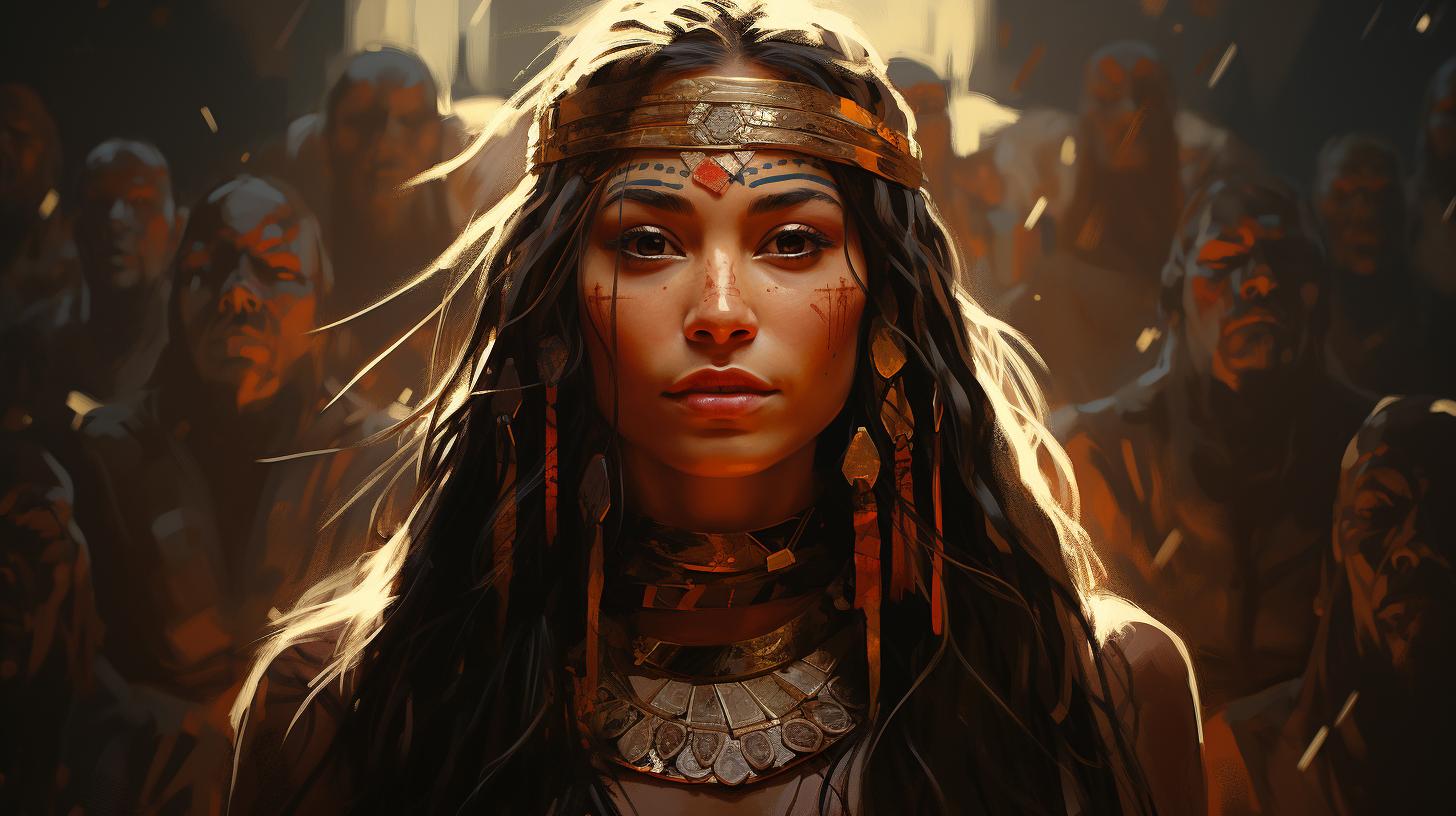Tlanuwa Cherokee: Exploring the Myths and Legends of the Cherokee Culture
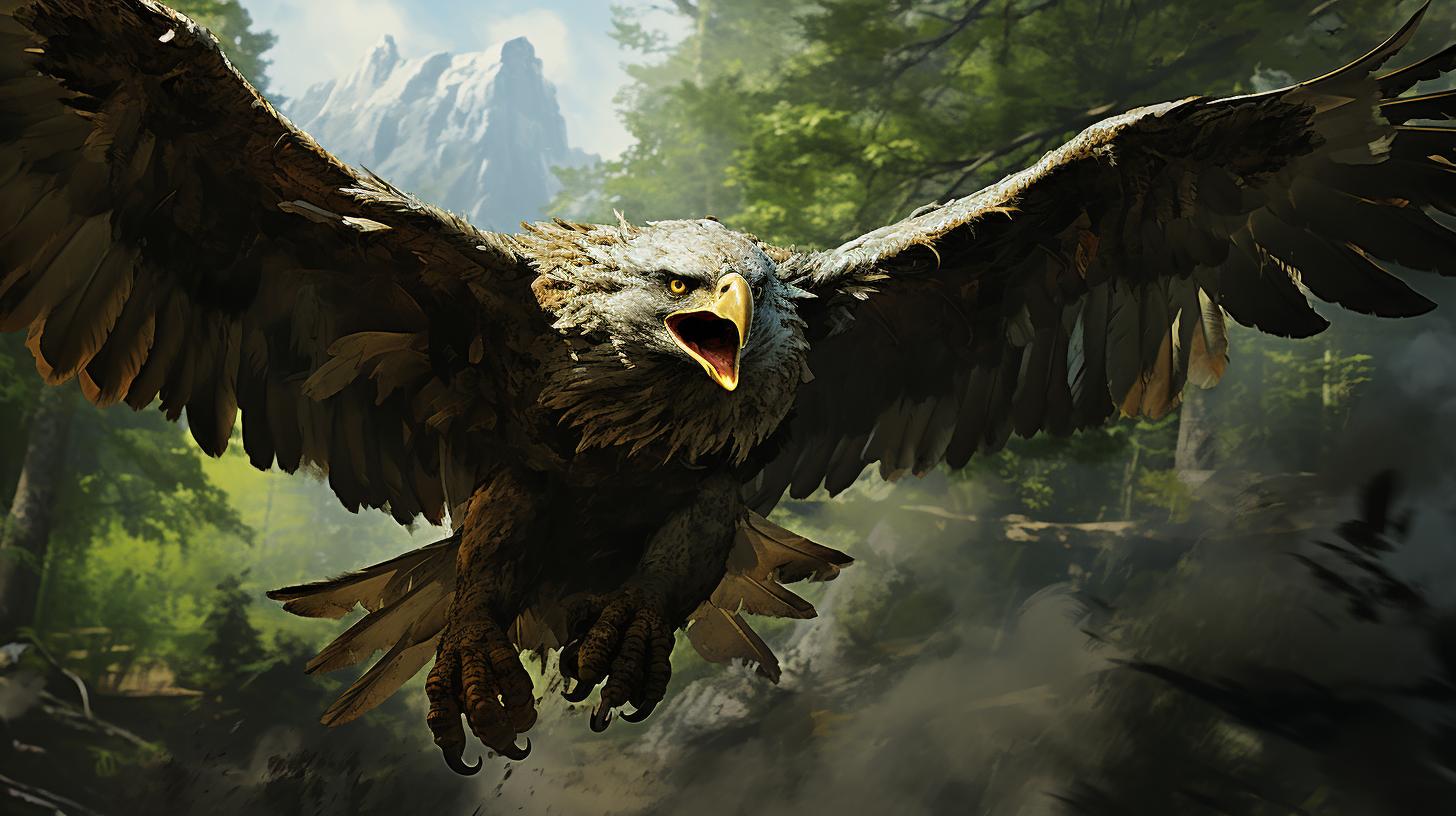
The Cherokee Nation has a rich history and culture, with a fascinating mythology passed down through generations. One of the most prominent stories involves the mythical creatures known as Tlanuwa.
These giant birds were said to have their nests high up in rocky cliffs, flying over rivers and occasionally snatching dogs or young children from settlements. The Cherokee people sought the help of a shaman to confront this threat, leading to a dramatic encounter with the powerful serpent Uktena. Explore the captivating legends of Tlanuwa Cherokee and their place in Cherokee heritage and traditions.
The Cherokee Nation: Exploring the Rich History and Culture
The Cherokee Nation is a fascinating civilization with a deep-rooted history and vibrant culture. Delving into the origins of the Cherokee people, we discover a heritage steeped in ancient times, mythology, and creation stories.
Central to their mythology are the great mythic birds known as Tlanuwa, majestic creatures that play a significant role in Cherokee folklore and legends.
The Origins of the Cherokee People
To understand the rich tapestry of Cherokee culture, we must first explore their ancestral beginnings. The Cherokee people trace their lineage back to the ancient times, where their mythology and creation stories originated.
These narratives provide insights into the beliefs, customs, and values that shaped the Cherokee way of life.
The Ancient Times: Mythology and Creation Stories
Within the Cherokee mythology, captivating tales of creation and ancient times unfold. These stories offer a glimpse into the Cherokee understanding of their place in the world and the profound connections they hold with nature, spirits, and the cosmos.
The Great Mythic Birds: Tlanuwa Cherokee
Among the mythical creatures revered by the Cherokee people, the Tlanuwa stands out. These gigantic avian beings inhabited high cave nests on rocky cliffs, soaring above rivers and occasionally seizing dogs or even young children from settlements.
The Tlanuwa’s awe-inspiring size and imperviousness to arrows led to tales of bravery and resilience in the face of their menacing presence.
The Legend of the Serpent: Uktena and Tlanuwa
Ancient Cherokee legends intertwine the Tlanuwa with another mythical creature, the Uktena, a powerful serpent.
In a dramatic confrontation, the Cherokee people enlisted the help of a shaman to confront the Tlanuwa. This encounter led to a battle between the Tlanuwa and the Uktena, resulting in the disappearance of both creatures from sight forever.
Cherokee Legends: Stories Passed Down Through Generations
The storytelling tradition holds a special place in Cherokee culture, as it serves as a means of preserving history, lessons, and the collective memory of the people. Passed down through generations, Cherokee legends continue to captivate and educate, showcasing tales of heroes, animals, supernatural beings, and the quest for balance with nature.
Wendigo: The Mysterious Creature in Cherokee Folklore
The Wendigo holds a significant place in Cherokee folklore, captivating generations with tales of this enigmatic creature. This section delves into the background and history of the Wendigo, exploring its origins and cultural significance within the Cherokee Nation.
Wendigo: Background and History
The history of the Wendigo extends beyond Cherokee culture, with roots in various Native American tribes. This subsection examines the broader context of the Wendigo myth, tracing its origins and understanding its significance in different Indigenous communities.
Wendigo Stories and Legends
The Wendigo is a central figure in Cherokee storytelling, and this subsection delves into the captivating and chilling tales surrounding this mysterious creature. Through these stories, the fearsome nature and supernatural powers of the Wendigo come to life, leaving a lasting impression on Cherokee folklore.
Native American Legends: Wendigo across Different Tribes
The legend of the Wendigo extends beyond the Cherokee Nation, with variations found in other Native American tribes. This subsection explores the diversity of Wendigo legends, highlighting similarities and differences in how different tribes depict this fearsome creature.
The Power of Medicine Men and Women in Cherokee Culture
The Cherokee people have a deep reverence for their medicine men and women, who play a vital role in their society. These revered individuals are seen as spiritual leaders and healers, guiding the community in matters of health and well-being.
The Role of Medicine Men and Women in Cherokee Society
Medicine men and women hold a respected position within the Cherokee community, serving as intermediaries between the physical and spiritual realms. They are entrusted with maintaining the balance between humans and the natural world, offering guidance, spiritual counsel, and healing rituals.
Healing Techniques and Medicinal Practices
Cherokee medicine men and women possess extensive knowledge of herbal medicine, employing a wide range of plants and natural remedies to treat various ailments. These healing techniques have been passed down through generations, embodying the wisdom and experience of their ancestors.
- Herbal remedies and poultices
- Meditation and spiritual ceremonies
- Massage and energy healing
- Dietary and lifestyle recommendations
The Spirit World and Shamanic Journeys
Medicine men and women in Cherokee culture believe in the existence of the spirit world and engage in shamanic journeys to commune with the divine. These spiritual journeys often involve entering altered states of consciousness through rituals and ceremonies, enabling them to seek guidance from ancestors and spirit guides.
- Connecting with ancestral spirits
- Seeking guidance from animal totems
- Performing divination rituals
- Channeling healing energies
The power and influence of medicine men and women in Cherokee culture cannot be overstated.
Their wisdom, spirituality, and healing abilities nourish the well-being of the Cherokee people and reinforce the strong connections to their ancestral traditions.
Birds in Cherokee Lore: From Tlanuwa to Sacred Messengers
Birds hold a special significance in Cherokee culture, symbolizing various aspects of life and spirituality.
They are seen as messengers from the spiritual world, carrying important signs and omens. Among the most enigmatic birds in Cherokee lore are the Tlanuwa, giant mythical creatures that had their nests in high caves on rocky cliffs.
These massive birds would soar above and dive down the rivers, occasionally attacking settlements and carrying away dogs or even small children. The Tlanuwa’s feathers were impenetrable, rendering arrows useless against them.
Birds as Symbols in Cherokee Culture
Birds are revered as symbols of freedom, wisdom, and communication in Cherokee culture. They are believed to bridge the earthly and spiritual realms, conveying messages and serving as intermediaries between humans and the divine.
Each type of bird carries its own symbolism, reflecting different virtues and qualities valued by the Cherokee people.
Tlanuwa: The Enigmatic Giant Birds
The Tlanuwa are legendary creatures deeply ingrained in Cherokee mythology. These colossal birds were feared for their ability to swoop down upon settlements and snatch away beloved companions or even children.
The Cherokee people, in their ingenuity, devised a plan to confront this threat, ultimately leading to an epic battle between the Tlanuwa and the powerful serpent Uktena.
Birds as Messengers from the Spiritual World
Birds are believed to be messengers from the spiritual world, carrying important signs and omens to guide the Cherokee people. Their flight patterns, calls, and interactions with humans are interpreted as messages from the divine realm.
The Cherokee pay close attention to birds, seeking their guidance and wisdom in various aspects of life.
Natchez Trace and the Influence of Other Native American Cultures
Natchez Trace holds significant importance in Cherokee history as an essential trade route and a site of cultural exchange. This ancient trail, stretching from modern-day Nashville, Tennessee, to Natchez, Mississippi, provided a path for trade and communication between various Native American tribes.
Natchez Trace: An Important Trade Route and Cultural Exchange
Natchez Trace served as a vital trade route connecting the Cherokee Nation with other indigenous peoples, such as the Natchez, Chickasaw, and Choctaw. This trail facilitated the exchange of goods, including pelts, pottery, and agricultural produce, fostering economic growth and cultural interaction.
Interactions with Other Native American Tribes
The Natchez Trace facilitated meetings and interactions between the Cherokee and neighboring tribes. Along this trail, tribes shared knowledge, traditions, and customs, enriching each other’s cultures and shaping their collective identities.
These encounters also fostered alliances and diplomatic relationships among the Native American communities.
Cultural Exchange and Adaptation in Cherokee Society
The cultural exchange along the Natchez Trace had a profound impact on the Cherokee society. They embraced new ideas, practices, and technologies from neighboring tribes, integrating them into their own way of life.
This adaptability allowed the Cherokee to evolve and thrive, demonstrating their resilience and ability to navigate a changing world.
Preserving Cherokee Heritage: Oral Tradition and Storytelling
Preserving the rich cultural heritage of the Cherokee Nation is of utmost importance, and it begins with the oral tradition and storytelling practices that have been passed down through generations.
The Importance of Oral Tradition in Cherokee Culture
Oral tradition holds a significant place in Cherokee culture, serving as a means of preserving history, customs, and values.
Through storytelling, the wisdom and knowledge of the Cherokee people are shared, ensuring that important lessons and experiences are not forgotten.
Storytelling as a Means of Education and Cultural Transmission
Storytelling plays a crucial role in educating and engaging the Cherokee community. Stories not only entertain but also serve as teaching tools, imparting moral lessons, cultural norms, and a sense of identity and belonging.
Honoring Ancestors: Storytelling as a Link to the Past
- Through storytelling, the Cherokee people pay homage to their ancestors and connect with their roots.
- Tales of bravery, resilience, and wisdom are shared to instill a sense of pride and cultural continuity.
- Listening to stories of their ancestors strengthens the bond between generations and fosters a deep appreciation for their heritage.
Preserving Language: Storytelling as a Tool for Language Revitalization
- Storytelling serves as a vital tool in preserving and revitalizing the Cherokee language, which is an integral part of the culture.
- By telling stories in Cherokee, younger generations are exposed to the language, fostering language skills and fluency.
- Efforts to incorporate Cherokee language into storytelling events help in the preservation and promotion of this endangered language.
Efforts to Preserve Cherokee Language and Traditions
Recognizing the importance of preserving the Cherokee language and traditions, various initiatives have been undertaken to ensure their survival for future generations.
Language Revitalization Programs and Institutions
Language revitalization programs, such as language immersion schools, language classes, and language preservation organizations, have been established to promote the use and learning of Cherokee.
Documentation and Archiving of Oral Histories
Efforts have been made to document and archive the oral histories, stories, and chants of the Cherokee people, ensuring their accessibility for research, education, and cultural preservation purposes.
Integration of Storytelling in Cultural Celebrations and Events
Storytelling is prominently featured in cultural celebrations, festivals, and gatherings, providing a platform for Cherokee storytellers to share their narratives with a wider audience.
Preserving and promoting the oral tradition and storytelling practices remain integral to the preservation of Cherokee heritage and its cultural legacy in the modern world.
Celebrating Cherokee Culture: Dance, Music, and Art
Traditional Cherokee Dances and Their Significance
Cherokee culture is deeply intertwined with traditional dances, which hold great significance in their community. These dances serve as a way to honor their ancestors, celebrate important events, and express their connection to nature.
The Stomp Dance, also known as the Friendship Dance, is a sacred dance performed in a circular formation with rhythmic stomping and chanting. Another notable dance is the Eagle Dance, imitating the grace and power of the eagle.
Each dance is meticulously choreographed and accompanied by traditional music.
Musical Traditions: Songs and Instruments
Music plays a vital role in Cherokee culture, with songs serving as a form of storytelling and cultural preservation. Traditional Cherokee songs celebrate nature, express love and loss, and pass down historical events.
The flute, drum, and rattle are iconic instruments used in Cherokee music. The haunting melodies of the flute and the rhythmic beats of the drum create a captivating musical experience, connecting the present to the ancestral past.
Cherokee Art: From Pottery to Visual Arts
Cherokee artisans have a rich artistic tradition that encompasses various forms, including pottery, basketry, beadwork, and visual arts. Pottery holds a special place in their culture, with intricate designs and patterns reflecting their connection to nature.
Basketry showcases the skill and creativity of Cherokee weavers, who use natural materials to create functional and decorative baskets. Beadwork, with its vibrant colors and intricate patterns, adorns clothing and accessories.
Additionally, visual arts encompass paintings, sculptures, and other contemporary expressions of Cherokee identity and heritage.
Challenges and Resilience: The History of the Cherokee Nation
The Cherokee Nation has faced numerous challenges throughout its history, showcasing remarkable resilience and perseverance. From forced removal and the devastating Trail of Tears to the ongoing struggle for recognition and sovereignty, the Cherokee people have overcome adversity and fought for their rights.
Forced Removal: The Trail of Tears and its Impact
During the early 19th century, the Cherokee people were forcibly removed from their ancestral lands in what became known as the Trail of Tears. Thousands of Cherokees were displaced, leading to the loss of lives and cultural heritage.
This tragic event had a profound impact on the Cherokee Nation, shaping their history and collective memory.
The Struggle for Recognition and Sovereignty
In the aftermath of the Trail of Tears, the Cherokee people faced ongoing challenges, including the struggle for recognition and sovereignty. Despite facing discrimination and attempts at assimilation, the Cherokee Nation has fought for their rightful place as a sovereign entity, asserting their political and cultural autonomy.
Revitalization and Cultural Preservation Efforts
Following a history of trauma and challenges, the Cherokee Nation has embarked on efforts to revitalize and preserve their cultural heritage. From language revitalization programs to the preservation of traditional practices and customs, the Cherokee people have worked tirelessly to ensure the continuity of their rich heritage for future generations.
Building a Stronger Future: Cherokee Identity Today
Despite the obstacles faced, the Cherokee Nation has remained resilient and continues to thrive. Today, Cherokee identity is celebrated and embraced, with a strong sense of community and pride in their heritage.
Through education, cultural initiatives, and political advocacy, the Cherokee people are building a stronger future while staying true to their roots.

